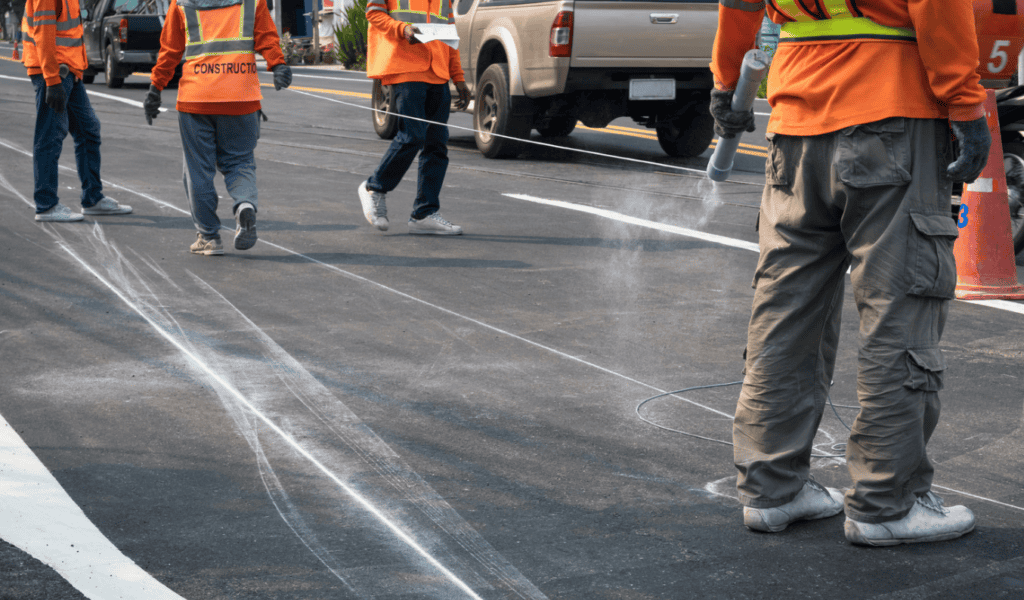Texas boasts the nation’s most expansive highway system, a vital network carrying people and goods, and a trillion-dollar economy. However, this vast network also harbors hidden dangers.
Table of Contents
A recent study revealed that accidents caused by the deadliest stretches of highway claim hundreds of lives annually in Texas. This article delves into the most hazardous sections of Texas roadways, exploring the factors contributing to these accidents and offering insights on navigating them safely.

Identifying the Most Hazardous Highways
Texas Department of Transportation (TxDOT) crash reports and federal highway safety rankings are crucial tools for identifying dangerous highway stretches. TxDOT compiles comprehensive accident data, including location, contributing factors, and fatalities.
Federal agencies like the National Highway Traffic Safety Administration (NHTSA) analyze nationwide crash data and publish rankings highlighting high-risk roadways.

High-Risk Highways Across Texas
Here’s a closer look at some of the most hazardous highways in Texas, highlighting specific stretches and common accident types:
Interstate 10 (I-10): This major east-west artery connects El Paso, Houston, and San Antonio. Hazardous areas include:
- Willow Street (Beaumont) to US 69 (Beaumont): This 4-mile stretch saw 17 fatalities between 2018 and 2020, with a total of 4.3 fatalities per mile.
- Executive Center Blvd (El Paso) to Piedras St (El Paso): Another 4.7-mile section with 11 fatalities in the same period (2018-2020). Alarmingly, a 2018 study revealed that drunk drivers were involved in 44% of fatal accidents on I-10 in Texas, significantly higher than the national average.
Interstate 35 (I-35): A major north-south route running from Laredo to Oklahoma, I-35 traverses San Antonio, Austin, Waco, Dallas, and Fort Worth. While Austin has the deadliest stretches:
- US 290 E to Tech Ridge Blvd (Austin): This 4.9-mile section claimed 18 lives between 2018 and 2020 (3.7 fatalities per mile).
- Manor Road to Stassney Lane (Austin): This is another concerning area, with 15 fatalities over the same period (2018-2020) within a 4.8-mile stretch.
- E 39th St to E Powell Ln (Austin): A particularly dangerous 3.8-mile section with a shocking 24 fatalities between 2017 and 2021.
Dallas and Fort Worth also have high-risk zones:
- Round Table Dr to S Marsalis Ave (Dallas): This 9-mile stretch witnessed 37 fatalities between 2017 and 2021.
- E Belknap St to Oak Grove Rd (Fort Worth): Another concerning area with 20 deaths over the same period (2017-2021) within a 6.3-mile stretch. It’s important to note that drunk driving is a major concern on I-35 in Texas, with 39.5% of fatal accidents involving intoxicated drivers. This is significantly higher than the statewide average.
Interstate 45 (I-45): Connecting Dallas and Houston before continuing to Galveston, I-45 holds the dubious distinction of being named “America’s Most Dangerous Highway” in 2020 by Popular Mechanics, with a staggering 56.5 fatalities per 100 miles. The most hazardous stretches include:
- Airtex Drive to West Road (Houston): This 4.6-mile section saw 11 fatalities between 2018 and 2020.
- W Little York Road to Chartres Street (Houston): A concerning 9.9-mile stretch with 32 deaths reported between 2017 and 2021.
- Tidwell Road to I-610 South Loop (Houston): This particularly dangerous 11-mile section claimed a shocking 50 lives from 2013 to 2015 (4.5 fatalities per mile).
Common Accident Types
Rollover accidents and head-on collisions are frequent occurrences on these hazardous stretches. Rollover accidents often happen on single-lane highways with uneven shoulders. At the same time, head-on collisions can be caused by factors like distracted driving, drunk driving, and speeding, especially in areas with limited visibility or poorly marked lanes.
Factors Contributing to Highway Dangers
Road Design and Infrastructure
The very design of some roadways can create hazardous situations. Narrow lanes offer little room for error, especially for larger vehicles. Lack of shoulders limits options for drivers who need to pull over due to emergencies or breakdowns, forcing them onto live traffic lanes.
Sharp curves on older highways, often poorly marked, can surprise drivers and lead to a loss of control. Maintaining a vast network of highways across a state like Texas presents a constant challenge. TxDOT prioritizes repairs and improvements, but some stretches remain vulnerable due to budgetary constraints.
Environmental Conditions
Texas’ diverse weather can create sudden hazards on roadways. High winds can cause vehicles to swerve, especially trucks and trailers. Flash floods can turn normally dry underpasses into raging torrents, trapping unsuspecting drivers.
Fog drastically reduces visibility, making judging distances and reacting to hazards difficult. Wildlife encounters, particularly with large animals like deer, pose a significant risk on specific rural stretches.
Driver Behavior
Ultimately, driver behavior plays a significant role in highway safety, as speeding significantly reduces reaction time and increases the severity of crashes. Distracted driving, whether caused by texting, using navigation apps, or eating behind the wheel, diverts attention from the road.
Driving under the influence of alcohol or drugs impairs judgment and coordination, significantly increasing the risk of accidents. The high volume of traffic on major highways can make defensive driving challenging. Maintaining awareness, using turn signals properly, and leaving ample following distance are all crucial for safe navigation.

Initiatives to Improve Safety
TxDOT is actively working to address safety concerns on Texas highways. Here are implementing a variety of measures:
- Improved Signage and Markings: Clearer signage and lane markings can help drivers navigate complex intersections and avoid confusion, especially during adverse weather conditions
- Rumble Strips and Median Barriers: Installing rumble strips on lane edges alerts drivers who veer off course, while median barriers prevent dangerous head-on collisions
- Targeted Enforcement Campaigns: TxDOT collaborates with law enforcement agencies to conduct targeted campaigns focusing on speeding, distracted driving, and driving under the influence in high-risk areas
Looking ahead, technological advancements offer exciting possibilities for further safety improvements.
Connected vehicle technology allows vehicles to communicate with each other and infrastructure, warn drivers of upcoming hazards, and automatically adjust speed limits during bad weather. These advancements promise a future with fewer accidents and safer travel on Texas highways.
Texas’ Hazardous Highway
While vital to the state’s economy, Texas’ vast highway system harbors hidden dangers. Data reveals specific stretches concerning accident rates. Road design, environmental conditions, and driver behavior all play a role.
Fortunately, TxDOT and other agencies are actively implementing safety improvements, with future technologies offering even more tremendous promise. Working together can create a safer future for all who travel hazardous highway sections of Texas roadways.



